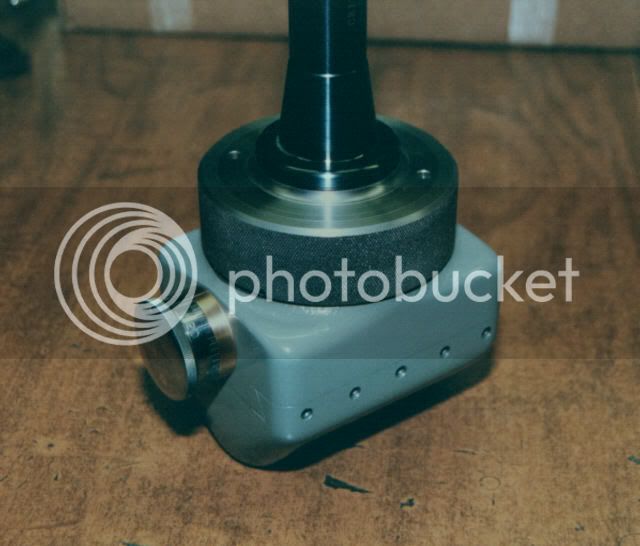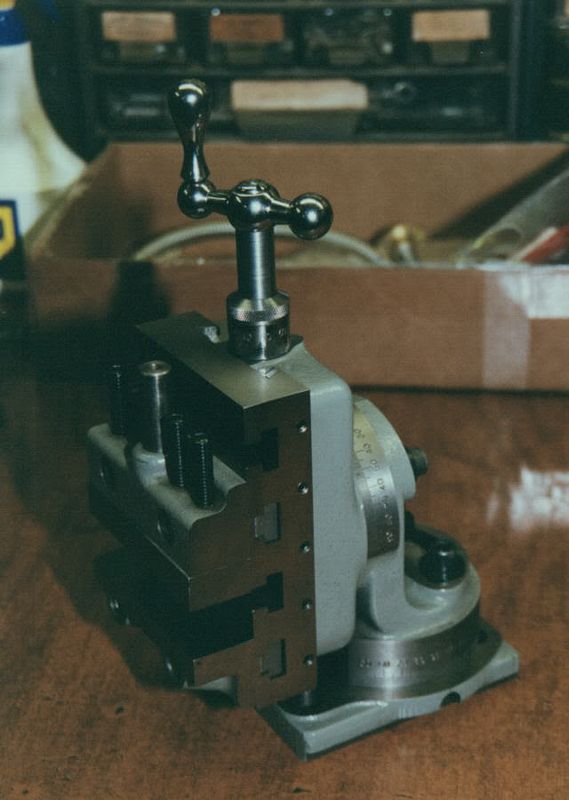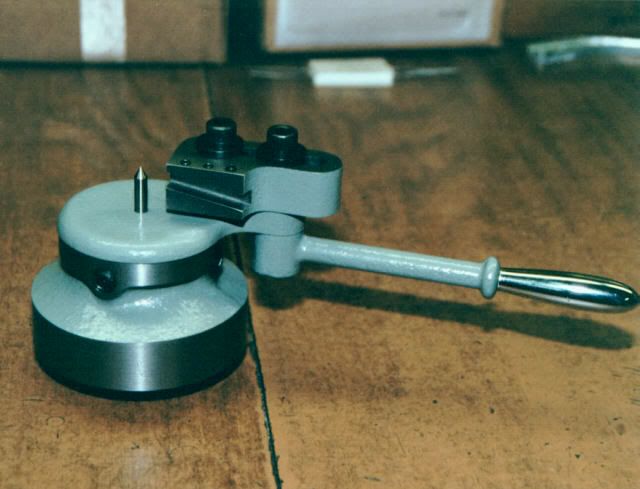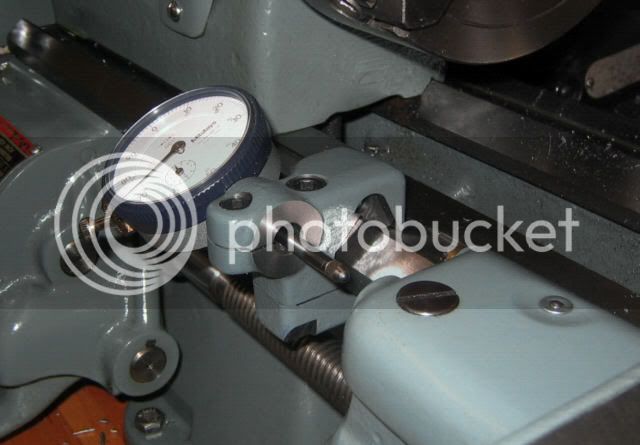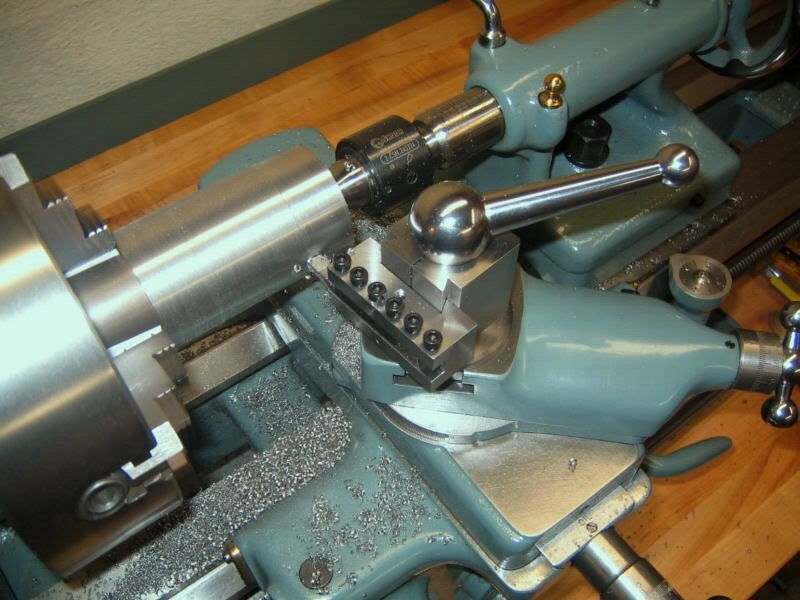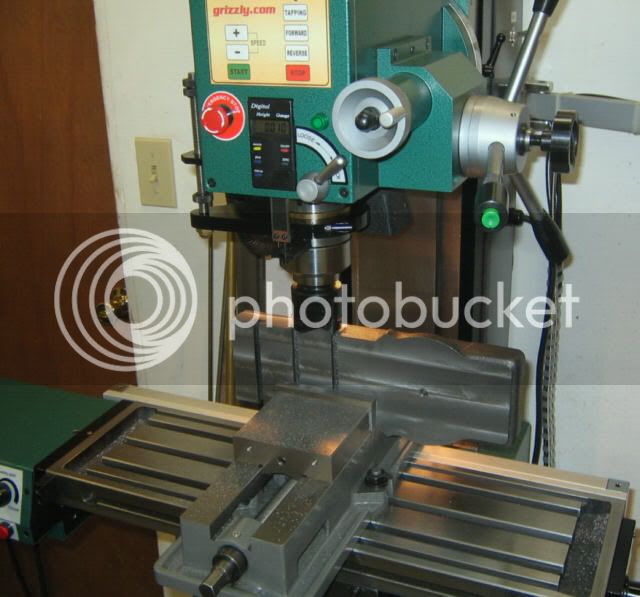The thread on collet systems for lathes had mention of Metal Lathe Accessories tools, the Loop Collet Chuck in particular.
I have made the MLA boring head and have gotten a lot of use out of it. The castings and drawings were very nicely done, and the instructions well written, so in a reasonable amount of time, I had a new boring head for a reasonable price.
I was digging through my pictures and found a couple of it and the R-8 shank I made to use it on my mill.
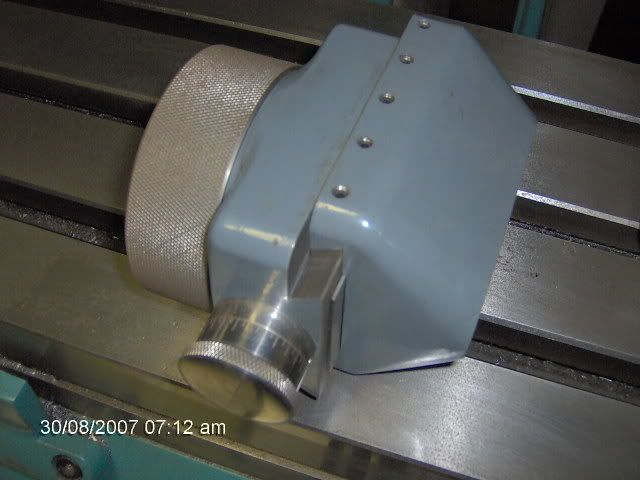
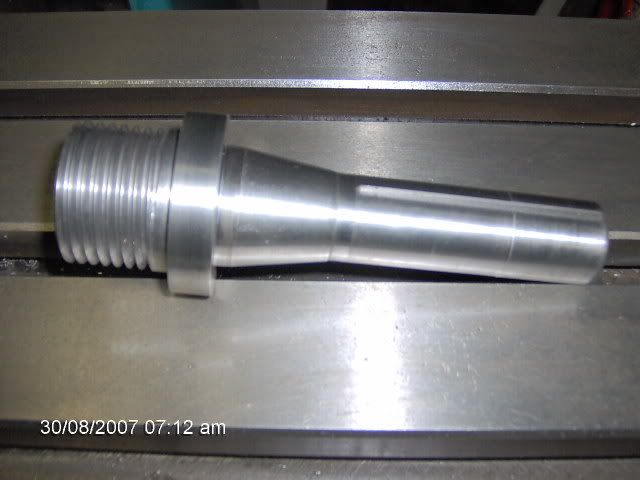
Also found a photo of the boring head being used to true up the tumbler gear shaft for my old P&W lathe.
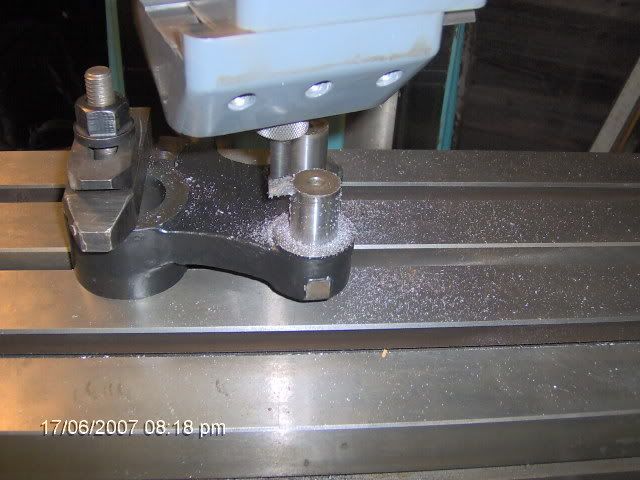
The only drawback I've run into so far is that if the boring head is offset much from center, I have to run the spindle much slower than I'd like sometimes because of the imbalance. This boring head is heavy!
Anyway, there are a few more items on MLA's list that I would like to get for my Atlas; but I haven't had the time.
Has anyone else made any of MLA's tools, what is it, and how does it work for you?
I know Paula has mentioned that she has made the toolpost (on my list) and is working on others. I'd like to see/hear about them.
Kevin
I have made the MLA boring head and have gotten a lot of use out of it. The castings and drawings were very nicely done, and the instructions well written, so in a reasonable amount of time, I had a new boring head for a reasonable price.
I was digging through my pictures and found a couple of it and the R-8 shank I made to use it on my mill.


Also found a photo of the boring head being used to true up the tumbler gear shaft for my old P&W lathe.

The only drawback I've run into so far is that if the boring head is offset much from center, I have to run the spindle much slower than I'd like sometimes because of the imbalance. This boring head is heavy!
Anyway, there are a few more items on MLA's list that I would like to get for my Atlas; but I haven't had the time.
Has anyone else made any of MLA's tools, what is it, and how does it work for you?
I know Paula has mentioned that she has made the toolpost (on my list) and is working on others. I'd like to see/hear about them.
Kevin





